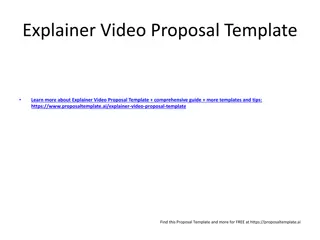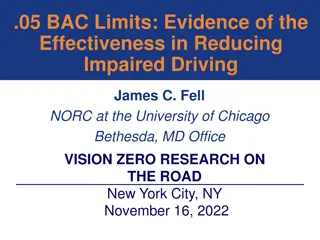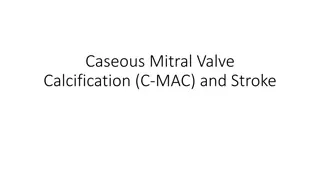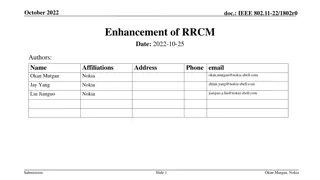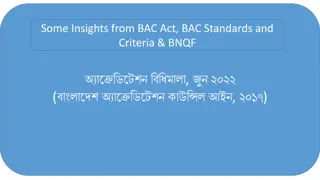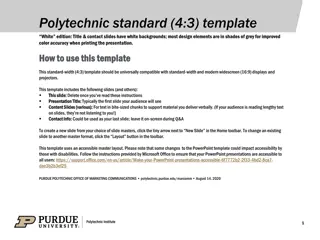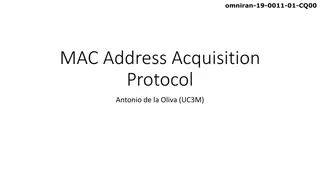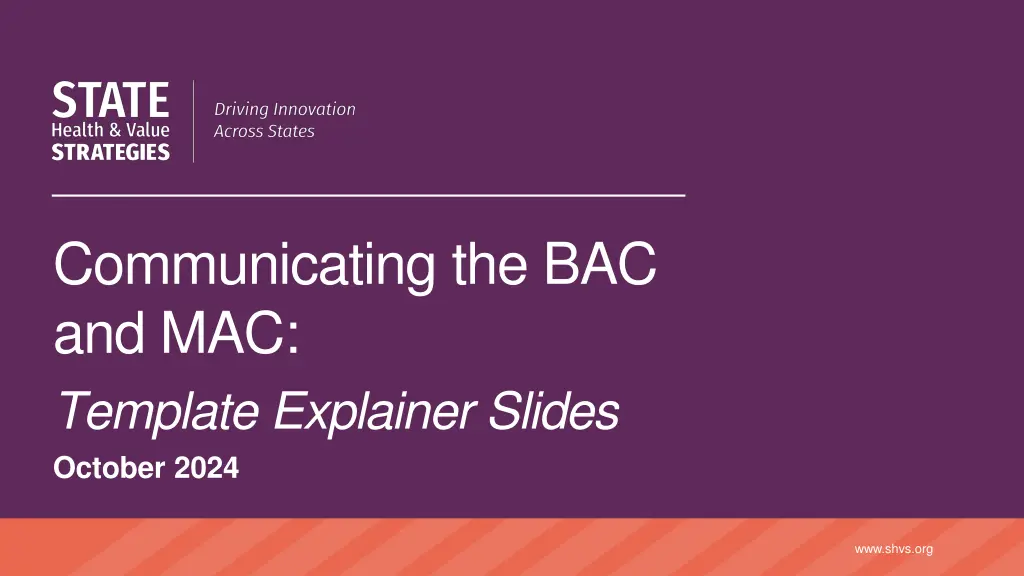
Communicating about BAC and MAC: Key Insights for State Medicaid Agencies
Enhance communication within state Medicaid agencies regarding the Beneficiary Advisory Council (BAC) and Medicaid Advisory Committee (MAC) with these informative slides. Learn about the functions, composition, and outcomes of BAC and MAC, along with tips for customization. Gain valuable insights to improve Medicaid policy and program design through feedback from enrollees.
Download Presentation

Please find below an Image/Link to download the presentation.
The content on the website is provided AS IS for your information and personal use only. It may not be sold, licensed, or shared on other websites without obtaining consent from the author. If you encounter any issues during the download, it is possible that the publisher has removed the file from their server.
You are allowed to download the files provided on this website for personal or commercial use, subject to the condition that they are used lawfully. All files are the property of their respective owners.
The content on the website is provided AS IS for your information and personal use only. It may not be sold, licensed, or shared on other websites without obtaining consent from the author.
E N D
Presentation Transcript
Communicating the BAC and MAC: Template Explainer Slides October 2024 www.shvs.org
How to Use These Slides This template slide deck is designed to support state agencies in communicating internally about the Beneficiary Advisory Council (BAC) and Medicaid Advisory Committee (MAC). This deck provides a high-level summary of the function, objectives, composition, and outcomes of the BAC and the MAC. States can customize the content of this template deck to reflect their unique contexts and priorities. You can delete the two introductory slides or pull the content slides into an existing PowerPoint. For additional customization support, please contact SHVS. This document was created by State Health and Value Strategies. Support for this document was provided by the Robert Wood Johnson Foundation. The views expressed here do not necessarily reflect the views of the Foundation.
GETTING INPUT TO IMPROVE MEDICAID State Medicaid agencies must create a Beneficiary Advisory Council (BAC) and Medicaid Advisory Committee (MAC) by July 2025.* The BAC and MAC will provide insights to the state Medicaid agency on topics related to program operations and the needs of Medicaid members, including: These new advisory groups will offer valuable insights to inform Medicaid policy and program design by creating a channel for enrollees to provide feedback to states and a space for states to ask questions, listen, and learn. Additions and Changes to Covered Services Eligibility, Enrollment, and Renewal Processes Coordination of Care Quality of Services States may adapt existing committees to meet requirements of the BAC and MAC, as long as the existing committees meet the new requirements, and the state declares in publicly posted bylaws that the group is being used to fulfill the BAC and MAC regulatory requirements. Cultural Competency, Language Access, and Health Equity Other Issues Impacting Health/Medical Services Enrollee and Provider Communications Access to Services *With some requirements phased-in over a longer time period.
Beneficiary Advisory Council (BAC) Medicaid Advisory Committee (MAC) The MAC is a diverse group of Medicaid stakeholders with a wide range of perspectives and experiences. The MAC includes BAC members and at least one representative from each of these categories: The BAC is a dedicated forum for people with lived experience of the Medicaid program. BAC members must include: Clinical providers/ administrators Current and/or former Medicaid enrollees Participating plans/ state associations Family members of enrollees Other state agencies as ex officio members Paid or unpaid caregivers of enrollees State, local, or community- based organizations By July 10, 2027, 25% of MAC members must be from the BAC* *In the final rule, CMS opted to phase in this requirement, providing that 10% of MAC members must also be members of the BAC for the period July 9, 2025, through July 9, 2026; 20% for the period July 10, 2026, through July 9, 2027; and 25% thereafter.
MEETING REQUIREMENTS The BAC must meet separately and in advance of MAC meetings. This helps ensure that the perspective of those with lived experience informs the broader discussions. The BAC and MAC must offer a variety of meeting participation options. Can be in-person, virtual, or hybrid, but telephone dial-in is always required. At least two MAC meetings per year must be public. Meetings must include dedicated time for public comment. The BAC and MAC must each meet once per quarter. Meetings may be held off cycle as necessary.
OUTCOMES FROM THE BAC AND MAC States must publicly post the MAC and BAC annual report, bylaws, membership lists, member recruitment/selection processes, and meeting minutes. Annual Report Requirements The MAC, with support from the state, must submit an annual report that describes for both the BAC and the MAC: Activities Topics discussed Recommendations The state s responses to recommendations MAC members must be provided an opportunity to review the annual report.
MEMBERSHIP States are encouraged to include diverse perspectives. The selection process must be open to the public. States must establish membership term limits. Length of term can be decided by state. Geographic Create Application BAC and MAC members must be selected on a continuous and rotating basis. Once a member s term has been completed, the state must select a new member. Demographic Publish and Recruit Healthcare Needs Medicaid Agency Reviews Provider Types Medicaid Director Selects BAC and MAC Members Members may not serve consecutive terms. At least one member of the state s executive staff must attend all BAC and MAC meetings.
BAC and MAC Resources The Centers for Medicare & Medicaid Services plan to issue a toolkit for states later this year that outlines model practices, recruitment strategies, and approaches for effectively facilitating enrollee participation. Additional resources to inform the development and implementation of the BAC and MAC are listed below. Transformational Community Engagement to Advance Health Equity State Examples of Medicaid Community Engagement Strategies: Two Case Studies January 30, 2023 January 30, 2023




